Beirut
| Beirut بيروت Bayrūt Beyrouth (French) |
|
 |
|
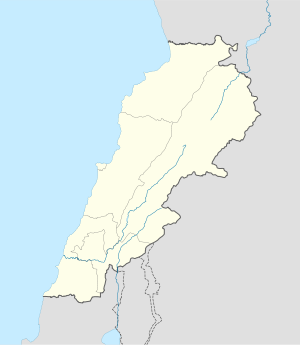 Beirut
|
|
| Coordinates: | |
| Country | |
|---|---|
| Governorate | Beirut, Capital City |
| Government | |
| - Mayor | Abdel Mounim Ariss[1] |
| Area | |
| - City | 19.8 km² (7.6 sq mi) |
| Population (2007) | |
| - City | 1 700 000 |
| - Density | 12,500/km² (32,374.9/sq mi) |
| - Metro | + 2 000 000 |
| Time zone | +2 (UTC) |
| - Summer (DST) | +3 (UTC) |
| Website: City of Beirut | |
Beirut (Arabic: بيروت, Bayrūt) is the capital and largest city of Lebanon with a population of over 2.1 million as of 2007. Located on a peninsula at the midpoint of Lebanon's coastline with the Mediterranean sea, it serves as the country's largest and main seaport and also forms the Beirut District area, which consists of the city and its suburbs. The first mention of this metropolis is found in the ancient Egyptian Tell el Amarna letters, dating to the 15th century BC, and the city has been continuously inhabited over the centuries since.
Beirut holds Lebanon's seat of government and plays a central role in the Lebanese economy with its Downtown, Hamra, Verdun, and Ashrafieh based corporate firms and banks. The city is also the focal point of the region's cultural life, renowned for its press, theaters and cultural activities. After the destructive Lebanese civil war, Beirut underwent major reconstruction,[2][3][4] and the redesigned historic city center, marina, pubs and nightlife districts have once again rendered it a popular tourist attraction. Beirut was listed as one of the top ten liveliest cities in the world by the lonely planet list of the top ten cities for 2009.
Contents |
History
Originally named Bêrūt, "The Wells" by the Phoenicians,[5][6] Beirut's history goes back more than 5000 years.[7][8] Excavations in the downtown area have unearthed layers of Phoenician, Hellenistic, Roman, Arab and Ottoman remains.[9] The first historical reference to Beirut dates from the 14th century BC, when it is mentioned in the cuneiform[8] tablets of the "Amarna letters." Ammunira of Biruta[10] (Beirut) sent 3 letters to the pharaoh of Egypt.[11] Biruta is also referenced in the letters from Rib-Hadda of Byblos. The most ancient settlement was on an island in the river that progressively silted up. The city was known in antiquity as Berytus (see also List of traditional Greek place names); this name was taken in 1934 for the archaeological journal published by the Faculty of Arts and Sciences at the American University of Beirut.[12]
In 140 BC, the city was taken and destroyed by Diodotus Tryphon in his contest with Antiochus VII Sidetes for the throne of the Seleucid monarchy. Beirut was soon rebuilt on a more regularized Hellenistic plan, renamed Laodicea in Phoenicia (Greek: Λαοδικεια ή του Φοινίκη) or Laodicea in Canaan, in honor of a Seleucid Laodice. The modern city overlies the ancient one and little archaeology had been accomplished until after the end of the civil war in 1991; now large sites in the devastated city center have been opened to archaeological exploration. A dig in 1994 established that one of Beirut's modern streets, Souk Tawile, still follows the lines of an ancient Hellenistic/Roman one.
Mid-first century coins of Berytus bear the head of Tyche, goddess of fortune; on the reverse, the city's symbol appears: a dolphin entwines an anchor. This symbol was taken up by the early printer Aldus Manutius in 15th century Venice.

Beirut was conquered by Agrippa in 64 BC and the city was renamed in honor of the emperor's daughter, Julia; its full name became Colonia Julia Augusta Felix Berytus.[13][14][15] The veterans of two Roman legions were established in the city: the fifth Macedonian and the third Gallic. The city quickly became Romanized. Large public buildings and monuments were erected and Berytus enjoyed full status as a part of the empire.[13]
Under the Romans, it was enriched by the dynasty of Herod the Great, and was made a colonia, Colonia Iulia Augusta Felix Berytus, in 14 BC. Beirut's school of law was widely known at the time.[16] Two of Rome's most famous jurists, Papinian and Ulpian, both natives of Phoenicia, taught at the law school under the Severan emperors. When Justinian assembled his Pandects in the 6th century, a large part of the corpus of laws were derived from these two jurists, and Justinian recognized the school as one of the three official law schools of the empire (533). Within a few years, as the result of a disastrous earthquake (551),[8][13][17] the students were transferred to Sidon.[18] Saida (Sidon)], IkamaAbout 30,000 were killed in Berytus alone and, along the Phoenician coast, total casualties were close to 250,000.[14]

Beirut passed to the Arabs in 635.[19][14] As a trading centre of the eastern Mediterranean, Beirut was overshadowed by Akka during the Middle Ages. From 1110 to 1291 it was in the hands of the Crusaders, such as John of Ibelin, the Old Lord of Beirut (1179–1236), who built the Ibelin family palace in Beirut.[19] No matter who was its nominal overlord, whether Turk or Mamluk, Beirut was ruled locally by Druze emirs.[20] One of these, Fakr ed-Din Maan II, fortified it early in the 17th century,[21] but the Ottomans retook it in 1763 and thenceforth,[21] with the help of Damascus, Beirut successfully broke Akka's monopoly on Syrian maritime trade and for a few years supplanted it as the main trading centre in the region. During the succeeding epoch of rebellion against Ottoman hegemony at Akka under Jezzar and Abdullah pashas, Beirut declined to a small town (population about 10,000), and was fought over among the Druze, the Turks and the pashas. After Ibrahim Pasha captured Akka in 1832,[22] Beirut began its early modern revival.
In 1888, Beirut was made capital of a vilayet in Syria,[23] including the sanjaks Latakia, Tripoli, Beirut, Akka and Bekaa.[6] Beirut became a very cosmopolitan city and had close links with Europe and the United States. Beirut became a centre of missionary activity that build an impressive education system. This included the Syrian Protestant College, which was established by American missionaries and eventually became the American University of Beirut (AUB). Beirut became the centre of Arab intellectual activity in the 19th century. Provided with water from a British company and gas from a French one, the city thrived on exporting silk grown on nearby Mount Lebanon. After French engineers established a modern harbor (1894) and a rail link across Lebanon to Damascus, and then to Aleppo (1907), much of the trade was carried by French ships to Marseille, and soon French influence in the area exceeded that of any other European power. In 1911, the population mix was reported in the Encyclopædia Britannica as Muslims, 36,000; Christians, 77,000; Jews, 2500; Druze, 400; foreigners, 4100. After the collapse of the Ottoman Empire following World War I, Beirut, along with all of Lebanon was placed under the French Mandate.
Lebanon achieved independence in 1943, and Beirut became its capital city. Beirut remained an intellectual capital of the Arab world and a major commercial and tourist center until 1975 when a violent civil war broke out in Lebanon.[24][25] During most of the war, the city was divided between the largely Muslim west part and the Christian east.[26] The central area of the city, previously the focus of much of the commercial and cultural activities, became a no man's land. Many of the city's inhabitants fled to other countries. In 1983, French and US barracks were bombed,[27][28][29] killing 302. Since the end of the war in 1990, the people of Lebanon have been rebuilding Beirut, and by the start of the 2006 Israel-Lebanon conflict the city had somewhat regained its status as a tourist, cultural, and intellectual center in the Middle East, as well as a center for commerce, fashion, and media. However, many would say the city has lost its premier status, due to competition from places like Dubai and Cyprus in the fields of tourism, business, fashion, commerce, and banking. Reconstruction of downtown Beirut has been largely driven by Solidere, a development company established in 1994 by Rafik Hariri. Beirut is home to the international designer Elie Saab, jeweller Robert Moawad, and to some popular satellite television stations, such as LBC, Future TV, New TV and others. The city was host to the Asian Club Basketball Championship and the Asian Football Cup. Beirut also successfully hosted the Miss Europe pageant eight times, 1960–1964, 1999, 2001–2002.
The 2005 assassination of former Lebanese Prime Minister Rafik Hariri near the Saint George Bay in Beirut shook the entire country.[30][31][32] Approximately one million people gathered for an opposition rally in Beirut, a month after the death of Hariri.[33][34] The "Cedar Revolution" was the largest rally in Lebanon's history.[35] The last Syrian troops withdrew from Beirut on 26 April 2005.[36] Both countries established diplomatic relations on 15 October 2008.[37]
During the 2006 Lebanon War, Beirut was far from the front lines but some Hezbollah targets were attacked by the Israeli Air Force.
In May 2008, violent clashes broke out in Beirut and opposition militants briefly controlled West Beirut before giving it to the control of the Lebanese Army.
Business and Industry in Beirut
Beirut is home to one of the largest seaports of the eastern Mediterranean Sea; its location and depth allows it host the largest Mother ship vessels. As such, its recently completed container port is operating at over capacity 10 years before the studies showed it would.
Beirut is a thriving and expanding tourism destination. One billion dollars has so far been pumped into new infrastructure (new hotels and renovations) and continues to rise.
Geography


Beirut is positioned on a peninsula extending westward into the Mediterranean Sea,[38] about 94 km (58 mi) north of the Lebanon-Israel border.[39] The city is flanked by the Lebanon mountains, it has taken on a triangular shape, largely influenced by its situation between and atop two hills: Al-Ashrafieh and Al-Musaytibah. The Beirut Governorate area is of 18 square kilometres (6.9 sq mi), and the city's metropolitan area is of 67 square kilometres (26 sq mi).[38] Beirut's coast is rather diverse; rocky beaches, sandy shores, and cliffs are situated beside one another.
Climate
Beirut has a Mediterranean climate characterized by a hot and humid summer, pleasant fall and spring, and cool, rainy winter. August is the hottest month of the year with a monthly average high temperature of 29 °C (85 °F), and January and February are the coldest months with a monthly average low temperature of 10 °C (50 °F). During the afternoon and evening the prevailing wind direction is from the west, i.e., onshore, or inland from the Mediterranean Sea; at night the wind direction reverses to offshore, i.e., blowing from the land out to the sea.
Winter is the rainy season, with major precipitation falling after December. The average annual rainfall is 860 millimetres (34.1 inches); the rainfall is concentrated during scattered days in winter falling in heavy cloudbursts.
| Month | Jan | Feb | Mar | Apr | May | Jun | Jul | Aug | Sep | Oct | Nov | Dec | Year |
|---|---|---|---|---|---|---|---|---|---|---|---|---|---|
| Average high °C (°F) | 16 (61) |
16 (62) |
18 (65) |
21 (71) |
23 (75) |
26 (80) |
28 (84) |
29 (85) |
28 (83) |
26 (80) |
22 (72) |
17 (64) |
22 (73) |
| Average low °C (°F) | 10 (50) |
10 (50) |
11 (52) |
14 (58) |
17 (63) |
20 (69) |
22 (73) |
23 (75) |
22 (72) |
20 (68) |
15 (59) |
11 (53) |
16 (62) |
| Precipitation cm (inches) | 18 (7.4) |
15 (6) |
9 (3.8) |
5 (2.0) |
1 (0.7) |
0.25 (0.1) |
0 (0) |
0 (0) |
0.5 (0.2) |
4 (1.9) |
11 (4.7) |
17 (6.9) |
86 (34.1) |
| Source: Weatherbase[40] 2007 | |||||||||||||
Quarters and sectors
Beirut is divided into 13 municipality recognized quarters (quartiers):[41]
- Achrafieh
- Ain El Mreisse
- Bachoura
- Beirut Central District
- Mazra’a
- Medawar
- Minet El Housn
- Moussaytbeh
- Port
- Ras Beirut
- Rmeil
- Saifé
- Zoukak el-Blatt
These quarters are divided into sectors (secteurs).[42]
Four of the twelve official Palestinian refugee camps in Lebanon are located in Beirut: Burj el-Barajneh, Dbayeh, Mar Elias, and Shatila.[43] Of the fifteen unregistered or unofficial refugee camps, Sabra, which lies adjacent to Shatila, is also located in Beirut.[44]
Government
The capital Beirut is the seat of the Lebanese Parliament[45] and of the government,[46] and encompasses all the Ministries, most of the public administrations, embassies and consulates.[47] Beirut is one of six mohafazah (state governorates; mohafazat, singular), with the others being Beqaa, North Lebanon, South Lebanon, Mount Lebanon and Nabatiye.[48]




| Name | Took office | Left office | |
|---|---|---|---|
| 1 | Kamel Abbas Hamieh | 1936 | 1941 |
| 2 | Nicolas Rizk | 1946 | 1952 |
| 3 | George Assi | 1952 | 1956 |
| 4 | Bachour Haddad | 1956 | 1958 |
| 5 | Philip Boulos | 1959 | 1960 |
| 6 | Emile Yanni | 1960 | 1967 |
| 7 | Chafik Abou Haydar | 1967 | 1977 |
| 8 | Mitri El Nammar | 1977 | 1987 |
| 9 | George Smaha | 1987 | 1991 |
| 10 | Nayef Al Maaloof | 1992 | 1995 |
| 11 | Nicolas Saba | 1995 | 1999 |
| 12 | Yaacoub Sarraf | 1999 | 2005 |
| 13 | Nassif Kaloosh | 2005 |
International organizations
The city is home to numerous international organizations. The United Nations Economic and Social Commission for Western Asia (ESCWA) is headquartered in Downtown Beirut[50][51] while the International Labour Organization (ILO)[52] and UNESCO (United Nations Educational, Scientific and Cultural Organization)[53] both have regional offices in Beirut covering the Arab world. The Arab Air Carriers Organization (AACO) is also headquartered in Beirut.[54]
Demographics
There are wide-ranging estimates of Beirut's population, from as low as 938,940 people,[55] to 1,303,129 people,[56] to as high as 2,012,000.[57] The lack of an exact figure is due to the fact that no population census has been taken in Lebanon since 1932.[58]

Beirut is one of the most religiously diverse cities of the Middle East,[59] with Christians, and Muslims both having a significant presence. There are nine major religious sects in Beirut (Sunni Muslim, Shiite Muslim, Druze, Maronite Catholic, Greek Orthodox, Greek Catholic, Armenian Orthodox, Armenian Catholic, and Protestant). Family matters such as marriage, divorce and inheritance are still handled by the religious authorities representing a person's faith. Calls for civil marriage are unanimously rejected by the religious authorities but civil marriages held in another country are recognized by Lebanese civil authorities. Several decades ago, Beirut was also home to a Jewish community, in Wadi Abu Jamil neighbourhood.
Beirut has had a history of political strife due to religious divisions. Religion has historically divided Lebanese society decisively, as evident in its prolonged civil war.
Education

Higher education in Beirut, and all over Lebanon, is provided by technical and vocational institutes, university colleges, university institutes and universities. Among these numbers of institutions nationwide, the Lebanese University is the only public institution in the capital.[60] The responsibility of the Directorate General of Higher Education is responsible for managing the university colleges, university Institutes and Universities in Beirut and nationwide.[60]
Among the most famous private schools in Beirut are the International College, Beirut, the American Community School, the Collège Protestant Français, the Collège Louise Wegman and the Grand Lycée Franco-Libanais.
The higher education system is based on the Baccalauréat libanais but the Baccalauréat Français is accepted as an equivalent. Before being admitted to any higher education institution, one must achieve his or her Baccalauréat examinations. Baccalauréat technique is an alternative to credentials.[60]
Foreign students who wish to study in higher Lebanese institutions must also meet Lebanese qualifications. Their examinations must be equivalent to the Baccalauréat system before they are granted admission to higher institutions. They are not subject to any special quota system, and scholarships are granted within the framework of bilateral agreements concluded with other countries.[60] Degrees obtained outside Lebanon must be certified by the Lebanese embassy abroad and the Ministry of Foreign Affairs in Lebanon. Then, candidates must go in person to the Secretariat of the Equivalence Committee with required documents.[61]
Beirut is home to some of the most well-renowned universities in the Middle East, such as the American University of Beirut, Université Saint-Joseph, Notre Dame University - Louaize and the Lebanese American University.
Transportation

The city's recently renovated airport is the Rafic Hariri International Airport and is located in the southern suburbs.[62][63][64]
By land, the latter are served by either service taxi or taxicab. A service taxi is a lot cheaper than a normal taxi, however to avoid misunderstanding agreement over the pricing need to be made before setting off.[65]
Beirut has frequent bus connections to other cities in Lebanon and major cities in Syria. The Lebanese Commuting Company, or LCC in short, is just one of a handful brands of public transportation all over Lebanon.[66] On the other hand, the publicly owned buses are managed by Office des Chemins de Fer et des Transports en Commun (OCFTC), or the "Railway and Public Transportation Authority" in English.[67] Buses for northern destinations and Syria leave from Charles Helou Station.[68][69]
Apart from the international airport, the Port of Beirut is another port of entry. As a final destination, Lebanon can be reached by ferry from Cyprus or by road from Damascus.[65]
Culture
Beirut has been exposed to cultural changes due to contacts with many civilizations. As mentioned under the history of Beirut, this city had interacted with cultures from the Greeks to the Romans and, presently, to the Arabs. Not only was there a law school under the Romanized Berytus, it was also believed to be the first law school in the world. Because of this, this is currently part of the cultural pride of the Lebanese.[70]
Beirut hosted the Francophonie and the Arab League summits in 2002. In 2007, Beirut hosted the ceremony for Le Prix Albert Londres,[71][72] which rewards outstanding Francophone journalists every year.[73] The city is set to host the Jeux de la Francophonie in 2009.[74][75]
Museums

The National Museum of Beirut is just a few blocks from the French Embassy and the Military Tribunal, and is found just at the corner of the Damascus Expressway.[76]
The American University of Beirut archaeological museum is the third oldest museum in the Middle East, it exhibits a wide range of artifacts from Lebanon and neighboring countries.[77]
Sursock Museum was built by the Sursock family at the end of the 19th century as a private villa. It was then donated to the Lebanese government and now houses Beirut's most influential and popular art museum. The permanent collection shows a collection of Japanese engravings and numerous works of Islamic art, and temporary exhibitions are shown throughout the year.[78]
Robert Mouawad Private Museum exhibits Henri Pharaon's private archaeology and antiques collection, located near Beirut's the Grand Serail.[79]
Planet Discovery is a children’s science museum. It holds interactive experiments, exhibitions, performances and workshops, and awareness competitions.[80]
Media
Beirut is the main center in Lebanon for the television, newspaper, and book publishing industries. The television stations include Tele Liban, OTV, LBC, Future TV, New TV, Al-Manar, ANB, and NBN. The newspapers include An-Nahar, As-Safir, Al Mustaqbal, Al Akhbar, Al-Balad, Ad-Diyar, Al Anwar, Al Sharq, L'Orient Le Jour and the Daily Star. Beirut is also one of the two main media hubs in the Arab World, the other being Egypt.
Sports

Beirut, in addition to Sidon and Tripoli, hosted the 2000 AFC Asian Cup.[81][82] There are two stadiums in the city, Camille Chamoun Sports City Stadium and Beirut Municipal Stadium.
There are eight football teams in the Lebanese Premier League that are based in Beirut: Nejmeh, Al-Ansar, Al-Hikma, Al Ahed, Al-Mabarrah, Safa, Racing Beirut and Shabab Al-Sahel.
Beirut has two Basketball teams, Al Riyadi and Al Hikma, that participate in the premiere division of the Lebanese Basketball Championship.[83]
Other sports events in Beirut include the annual Beirut Marathon, Hip ball, a weekly Horse racing at Beirut Hippodrome, and Golf and Tennis tournaments that take place at Golf Club of Lebanon.
Recently Beirut has taken to rugby league as well, with three out of the five teams in the Lebanon Championship based in Beirut.
Beirut was considered as a possible candidate for the 2024 Summer Olympics games.[84] The massive $1.2 billion Sannine Zenith project will make Lebanon capable of holding the games.[85]
Arts & Fashion
There are hundreds of art galleries in Beirut and its suburbs. Lebanese people are very involved in art and art production. More than 5000 fine art artists and equal artists working in music, design, architecture, theatre, film, photography and all other forms of art are producing in Lebanon. Every year hundreds of fine art students graduate from universities and institutions. Artist Workshops are flourishing all around Lebanon. In Beirut specifically, the art scene is very rich, vibrant, and diverse.
On another scale, fashion and couture are very much thriving throughout the city. Fashion houses are opening up and a number of international fashion designers have displayed their work in various fashion shows. Beirut is home to international fashion designers such as Elie Saab, Zuhair Murad, and Georges Chakra.
Tourism
The once destroyed town center is thriving once again and is very much active. Its former reputation as a crossroads between three continents and gateway to the East has been restored and modernized. Beirut is the oft-invoked “Paris of the East”, and there is plenty of sightseeing, shopping, cuisine, and nightlife to keep a tourist within the city limits for the duration a visit to Lebanon.[86] Lebanon's capital city is a vibrant, stylish metropolis, All over the city, sleek, modern buildings are springing up, alongside arabesque Ottoman and French-style buildings, giving Beirut a unique and very distinctive style often not seen in other Middle Eastern cities.[87]
In Travel and Leisure magazine's World Best Awards 2006, Beirut was ranked 9th best city in the world, falling just short of New York City and coming ahead of San Francisco.[88] However, the list was voted upon before the war broke out in Lebanon that same year. Tourist numbers has increased exponentially these last few months.[89] Recently, Lonely Planet named Beirut as ranking in its 2009 top ten liveliest cities on the planet.
Famous Births
- Fairouz, recognized and perceived as the most prominent Arab singer.
- Georgina Rizk, former Miss Universe.
- Anna Ouroumian, Social Entrepreneur, President and CEO of the Academy of Business Leadership.
- Ibrahim Ballout, Pro European Rugby League Player, Businessman.
- Keanu Reeves, Canadian actor.
- Elissa, A famous world music awarded Lebanese singer.
- Elie Saab, world famous Lebanese fashion designer.
- Amin Maalouf, author born in 1949.
- Ibrahim Maalouf, trumpeter (nephew of Amin Maalouf)
- Mika Penniman, Singer and composer born in 1983.[90][91]
- Serj Tankian, Lead vocalist for the Los Angeles band, System of a Down.[92]
- John Dolmayan, Drummer for the Los Angeles band, System of a Down.
- Michel Elefteriades, Greek-Lebanese politician, artist, producer and businessman.
- Karl Wolf, Lebanese RnB singer now living in Canada.
- K-Maro, Lebanese RnB singer now living in Canada.
- Massari, Lebanese RnB singer.[93]
- Dom Joly, comedian and journalist.
- chaker noon, Architect and Founder of www.baldati.org link title.
- Amal Hijazi, famous singer
- Don Blair, famous American jurist and legal librarian
- Freddy Deeb, professional poker player.
- Steve Kerr, 5 time NBA Champion.
- Neal Conan, American radio journalist, National Public Radio.
- Nabil Gholam, architect.
- Nancy Ajram, Arab Lebanese pop folk singer.
- Prince Anfoun, Dubai.
Gallery
Sister cities
 Athens, Greece[94]
Athens, Greece[94]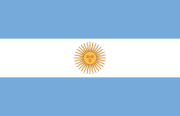 Buenos Aires, Argentina[94]
Buenos Aires, Argentina[94] Brest, France[94]
Brest, France[94] Dubai, United Arab Emirates[94]
Dubai, United Arab Emirates[94] Strasbourg, France[94]
Strasbourg, France[94] Lyon, France[94]
Lyon, France[94] Marseille, France[94]
Marseille, France[94] Yerevan, Armenia[94]
Yerevan, Armenia[94]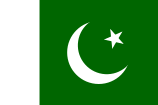 Karachi, Pakistan[94]
Karachi, Pakistan[94] Florence, Italy
Florence, Italy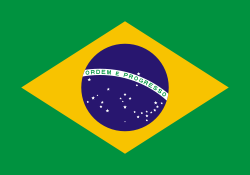 Sao Paulo, Brazil
Sao Paulo, Brazil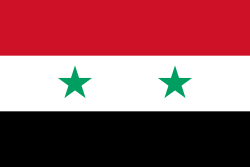 Damascus, Syria[94]
Damascus, Syria[94]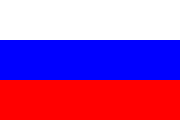 Moscow, Russia[94]
Moscow, Russia[94] Quebec, Canada[94]
Quebec, Canada[94]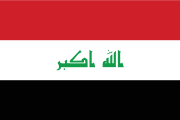 Baghdad, Iraq[94]
Baghdad, Iraq[94] Amman, Jordan[94]
Amman, Jordan[94] Kuwait City, Kuwait[94]
Kuwait City, Kuwait[94] Nicosia, Cyprus
Nicosia, Cyprus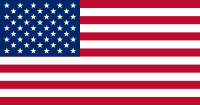
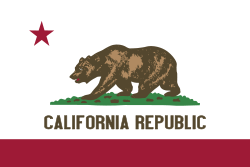 Los Angeles, California United States[95]
Los Angeles, California United States[95] istanbul, Turkey
istanbul, Turkey Cairo, Egypt
Cairo, Egypt Split, Croatia
Split, Croatia Zagreb, Croatia
Zagreb, Croatia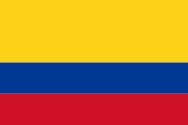 Bogota, Colombia
Bogota, Colombia Isfahan, Iran.[96]
Isfahan, Iran.[96]
See also
- Beirut International Exhibition & Leisure Center
References
- ↑ Word from the President, Beirut.gov.lb
- ↑ Reconstruction of Beirut, Macalester College
- ↑ Lebanon's Reconstruction: A Work in Progress, VOA News
- ↑ Beirut: Between Memory and Desire, Worldview
- ↑ History - Beirut, 999Beirut
- ↑ 6.0 6.1 History of Beirut, Lebanon Links
- ↑ Under Beirut's Rubble, Remnants of 5,000 Years of Civilization, The New York Times
- ↑ 8.0 8.1 8.2 Profile of Lebanon: History Lebanese Embassy of the U.S.
- ↑ Research Projects - History and Archeology, American University of Beirut (AUB)
- ↑ Phoenicia in Encyclopaedia Biblica, Case Western Reserve University
- ↑ Phoenicia, Jrank.org
- ↑ Berytus Archeological Studies, American University of Beirut (AUB)
- ↑ 13.0 13.1 13.2 About Beirut and Downtown Beirut, DownTownBeirut.com. Retrieved November 17th, 2007
- ↑ 14.0 14.1 14.2 Beirut Travel Information, Lonely Planet
- ↑ Czech excavations in Beirut, Martyrs' Square, Institute for Classical Archaeology>
- ↑ Beirut, Britannica.com
- ↑ History of Phoenicia, fullbooks.com. Retrieved November 17th, 2007
- ↑ Saida (Sidon)
- ↑ 19.0 19.1 Beirut, Britannica.com
- ↑ Druze History, DHF Druze Heritage Foundation
- ↑ 21.0 21.1 Beirut, Jrank.org
- ↑ Corpus Inscriptionum Arabicarum Palaestinae, by Moshe Sharon
- ↑ Modern Beirut, Macalester College
- ↑ An Alternate Alternative History, Foreign Policy
- ↑ Dancing in the street, The Independent
- ↑ Lebanon (Civil War 1975–1992, Global Security
- ↑ Terrorism - Terrorist Attacks Chronology, CDI Terrorism Project
- ↑ Frontline: Target America: Terrorist Attacks on Americans, 1979–1988, PBS.org
- ↑ Historical Fact: Bombing of marine barracks, October 23, 1983, lebaneseforces.com
- ↑ [1], Wikipedia
- ↑ History of Lebanon (The Cedar Revolution), LGIC. Retrieved November 19th, 2007
- ↑ Watch - The Cedar Revolution, The Winds of Change. Retrieved November 19th, 2007
- ↑ 'Record' protest held in Beirut, BBC News
- ↑ From Hopeful To Helpless At a Protest In Lebanon, Washingtonpost.com
- ↑ Hariri sister calls for justice, CNN International
- ↑ On This Day - 26 April, BBC.co.uk
- ↑ [2]
- ↑ 38.0 38.1 Beirut - The Pearl of the Middle East
- ↑ Howstuffworks "Geography of Beirut"
- ↑ "Weatherbase: Historical Weather for Beirut". Weatherbase (2007). Retrieved on 2007-09-26.
- ↑ "Beirut's Official Webcite". Retrieved on 2008-04-23.
- ↑ http://www.beirut.gov.lb/www.beirut.gov.lb/MCMSEN/Maps+of+Beirut/
- ↑ "Lebanon refugee camp profiles". UNRWA (31 December 2006). Retrieved on 2008-04-18.
- ↑ Sherifa Shafie. "Palestinian Refugees in Lebanon" (PDF). Force Migration. Retrieved on 2008-04-18.
- ↑ Beirut from the sky, Parliament Square, Ryad el Solh square
- ↑ Great Lebanon - TIME
- ↑ Links
- ↑ Beirut - The Pearl of the Middle East
- ↑ موقع مدينة بيروت الرسمي
- ↑ ICPD+5 NEWS BULLETIN, United Nations General Assembly. Retrieved November 15th, 2007
- ↑ United Nations Economic and Social Commission for Western Asia
- ↑ International Labour Organization (Lebanon)
- ↑ UNESCO Beirut
- ↑ Arab Air Carriers Organization
- ↑ United Nations: "Demographic Yearbook 2003", page 53, 2003
- ↑ Lebanese Ministry of Environment: "Lebanon State of the Environment Report", Chapter 1, page 11, 2001.
- ↑ Encyclopedia of the Nations
- ↑ Lebanese Ministry of Environment: "Lebanon State of the Environment Report", Chapter 1, page 9, 2001.
- ↑ At Beirut Protest, a Reminder of Religious Diversity, The New York Times. Retrieved November 17th, 2007
- ↑ 60.0 60.1 60.2 60.3 Lebanon - Education system
 RTF (26.5 KiB), Unesco.org
RTF (26.5 KiB), Unesco.org - ↑ Education FAQs, informs.gov.lb
- ↑ History Beirut International Airport
- ↑ Rafic Hariri International Airport (BEY/OLBA), Beirut, Lebanon, Airport Technology
- ↑ Lebanon - Beirut International Airport (BEY), worldtravels
- ↑ 65.0 65.1 Transportation & Communication, Ikama
- ↑ http://www.lccworld.com/profile.asp Company Profile], LCC
- ↑ [3]
- ↑ Public transportation in Beirut, Travel-to-Lebanon.com
- ↑ Beirut Transport, Lonely Planet
- ↑ Inside Beirut: Culture, tripadvisor
- ↑ Albert Londres Prizes, France Diplomatie
- ↑ Daily Press Briefing, Embassy of France in the U.S.
- ↑ http://fr.news.yahoo.com/11052007/202/le-prix-albert-londres-remis-beyrouth-le-18-mai.html
- ↑ (French) [http://www.libanvision.com/jeux-liban.htm Les Jeux de la Francophonie au Liban Beyrouth 2009], Libanvision
- ↑ (French) Les Jeux de la Francophonie, Moldavie.fr
- ↑ History, National Museum of Beirut
- ↑ AUB Museum
- ↑ Hotelbook.com - Events Guide: Sursock Museum (Sursock Museum, Beirut, Lebanon)
- ↑ Welcome to Robert Mouawad Private museum
- ↑ Solidere - Beirut City Center Culture - Planet Discovery
- ↑ China Ready to Face Tough Task in Asian Cup Bidding, People's Daily
- ↑ Lebanese Football need to make their mark in Asia, Maxell
- ↑ Riyadi's History
- ↑ Interview about Lebanon, Arabia English
- ↑ Sannine Zenith
- ↑ Downloadable Brochures: Hidden Lebanon Brochure
- ↑ What to See & Do in Beirut
- ↑ Travel and Leisure: Top 10 Cities Overall
- ↑ Will tourists return to Beirut? - Trinity News
- ↑ Mika Interview, Popworld
- ↑ Yahoo! Launch
- ↑ Serj Tankian, MTV
- ↑ Massari, Music News
- ↑ 94.00 94.01 94.02 94.03 94.04 94.05 94.06 94.07 94.08 94.09 94.10 94.11 94.12 94.13 94.14 "Twinning the Cities". City of Beirut. Retrieved on 2008-01-13.
- ↑ http://www.lacity.org/SisterCities/html/23.htm
- ↑ "Isfahan, Beirut named sister cities". MNA. Retrieved on 2007-05-02.
Further reading
- Linda Jones Hall, Roman Berytus: Beirut in Late Antiquity, 2004.
- Samir Kassir, Histoire de Beyrouth, Fayard 2003.
- Richard Talbert, Barrington Atlas of the Greek and Roman World, (ISBN 0-691-03169-X), p. 69.
External links
- Mohafazah of Beirut
- Official website of Beirut
- The Capital Beirut
- Wikimedia Atlas of Lebanon
- Beirut travel guide from Wikitravel
- Wikia has a wiki on this subject at Beirut
- Beirut at the Open Directory Project
- Macalester.edu
|
|||||||||||||||||